
Identification
Bruce Peninsula National Park
Learn how to identify a Massasauga Rattlesnake
Looks like:
The Massasauga can range in colour from tan to light brown, to very dark brown.
It can be identified by:
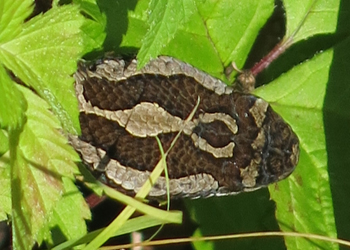

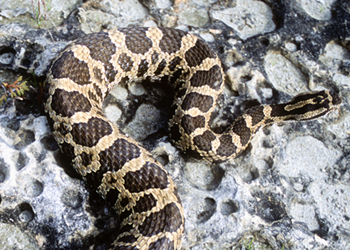
Sounds like:
You may hear this species before you see it, as the Massasauga can produce a "buzzing" rattle with its tail as a warning signal.
Often confused with:
The Massasauga is often confused with the Northern watersnake or Eastern milksnake, species which are also found in the park. Milksnakes will sometimes imitate rattlesnakes by rustling their tails in dry leaves, though they are actually harmless. Watersnakes and milksnakes are generally thinner than Massasaugas, have tapered tails rather than blunt tails, and do not have saddle-shaped patterning.
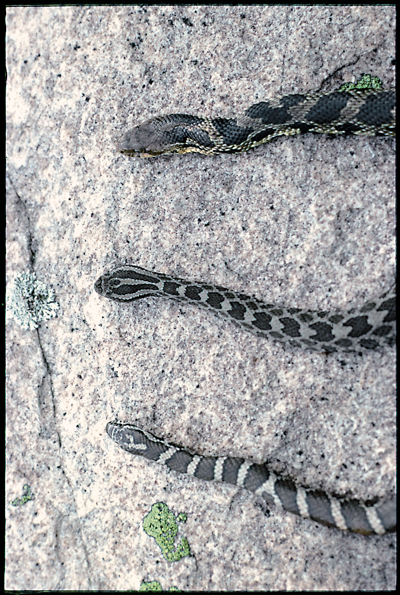
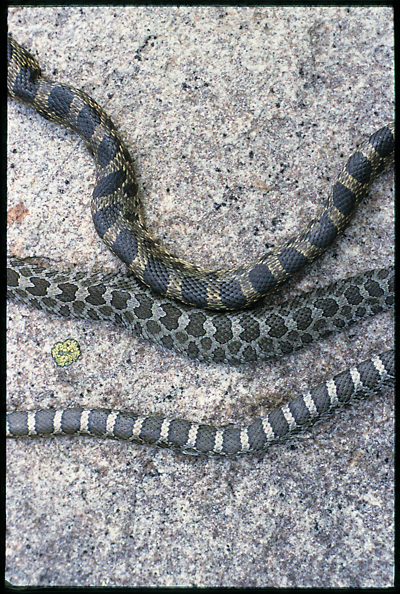

Pictured from top to bottom: Eastern foxsnake (the foxsnake is not found in Bruce Peninsula National Park), Massasauga rattlesnake, Eastern milksnake. The Massasauga's diamond-shaped head, thick body, saddle-shaped markings and stubby tail are evident in comparison to the other snakes.
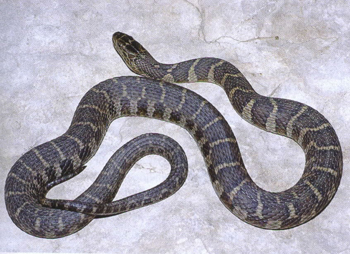
Northern watersnakes can range from light brown patterning to almost pure black. They are often mistaken as Massasauga rattlesnakes.
- Date modified :